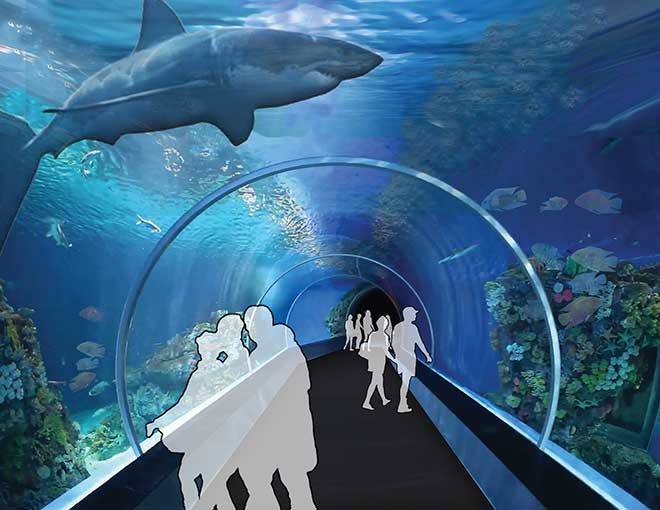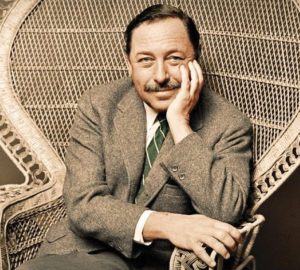clayton
For years the locals called it ‘Schnuckendorfs.’ That’s sometime after Schnucks took over the old Bettendorf grocery store at Clayton and South Hanley in the mid-20th century and ran the supermarket there until closing it in 2003. Ambitious plans have been floated for the site for years, including one last fall that included, natch, a high-rise. And an organic grocery store. But actual plans since the outset have been as hard to pin down as Ikea’s intentions to build a store here, until now. The site, 3-plus acres, is mostly parking lot these days, but if present plans come to fruition—and they’re similar to what was proposed in November—a mixed-use development will sprawl across one of the most mysteriously long-vacant corners in the metro. The new plan includes seven stories of residential units, a restaurant, retail, and a hip grocery that’s long on fruit and short on Froot Loops and beef jerky. Just another strip mall with a parking lot and condos or apartments? Not likely—this is Clayton, after all. The plan has yet to come under the watchful eyes of the architectural mavens at City Hall, and developers are playing costs close to the vest at this point. We’re pretty sure there won’t be a Ferris wheel, aquarium or disco. You’ll have to keep your eyes on Union Station in downtown St. Louis—see item below—for those developments to come to fruition in the not-so-distant future. No kidding. (Except for the disco maybe. But one can hope, right?)
ladue
Ehan Kamat is quite the entrepreneur, having realized a need and designed a solution … at age 12. The MICDS student, now 16, came up with the idea for a podiatric device after watching his mother suffer from the excruciating heel pain of plantar fasciitis, a chronic inflammation of the ligaments on the soles of the feet. His invention, the Solemender, combines cold and massage therapy, and doesn’t skid like the frozen water bottles some sufferers are wont to use. Ehan prototyped, developed and produced the product, now sold at multiple retailers in The Lou—and everywhere else in the world online. He is involved with every aspect of the company, including marketing, sales, ecommerce and distribution. Ehan recently got a nod from Upstart, a national digital publication, as one of the country’s 21 most notable new inventors. The 10th-grader helms the 3-D printing group of the MICDS robotics team, enjoys speaking to youngish people and won SLU’s 2015 Teen Escalator Pitch Contest. You’ve heard of the ‘elevator pitch,’ where you screw up the courage to give a resume spiel to a company mover-and-shaker in a 30-second elevator ride to his floor? Well Ehan snagged distribution for the Solemender with Brookstone by contacting the company CEO via LinkedIn. Talk about having the skills that will pay the bills!
st. louis
Are we gonna have Chicago’s Navy Pier right here in River City? Maybe even better, when Bob O’Loughlin and LHM’s plans for an aquarium fill up 75,000 square feet of St. Louis Union Station. Used to be dozens of trains came through this, the busiest train station in the world back in the day (late 19th century). But by 2018, thousands of fish will meander their way through the waters of this attraction, including one of the largest collection of sharks in the Midwest. And people will view them as closely as they dare—without having to take a plunge themselves into the 385,000-gallon tank—either through the glass or from above, if they don’t mind walking across the bridge to be suspended above the roiling, shark-infested waters. Roiling? Infested? Well, not exactly. Although sharks are too stupid to be domesticated, they’re mostly mellow unless they sense blood in the water. At feeding time. The aquarium will be part of a $70 million family entertainment complex that includes the previously announced St. Louis Wheel, a 200-foot-high observation wheel with 30 fully enclosed gondolas that will take three to four rotations during a 10- to-12-minute ride. The St. Louis Wheel promises to be an iconic part of the city skyline and will operate 365 days a year. And to Chicago and Shedd’s Aquarium, we say: We’ll put our sharks against your sharks anytime. In a couple of years. The first feature of the complex is set to open in November: the Fire & Light Show at the Lake. This will emanate from nine submerged fire pods, enhanced by lighting in trees that will synchronize every half hour to music. Chicago, Schmicago … Vegas, anyone?
university city
For all the advances of modern medicine, health care architecture has long been guided by custom and intuition rather than research and testing. That’s changing, thanks to an emerging field known as evidence-based design, says Xiaobo Quan, director of the newly formed Center for Health Research & Design (CHRD) at Washington University. Roman military hospitals, known as valetudinarian, wrapped small patient rooms around a central courtyard. Similar ancient designs can be found elsewhere. Replace the courtyard with a nurses station, and the floor plan might be that of a contemporary emergency department. But is it still viable? An emerging field known as evidence-based design has begun to rigorously reappraise the relationship between the built environment and patient outcomes. “These are inherently interdisciplinary problems,” says Quan, who joined the university’s Sam Fox School of Design & Visual Arts as CHRD director. The built environment affects behavior, as well as energy efficiency and other aspects of building performance, says Quan. But behavior also is shaped by education, operations and corporate culture. Quan says a broad perspective is essential. His doctoral thesis investigated how patient room design can affect both hand-washing compliance and family visitation. Compared to an open-bay intensive care unit, Quan found that a well-designed private room (in which sinks and gel dispensers are located by the entrance) can significantly increase hand washing and, subsequently, patient outcomes. At the same time, having more space at the bedside impacts how long visitors stay, he says. This in turn affects a patient’s experience, sense of social support and, ultimately, health outcomes.
webster groves
Parents of kindergarteners whose young’uns attended full days in the Webster Groves School District last year may be receiving refunds for the tuition they paid, contingent on the state returning to the district the monies collected last year. The board approved full-day kindergarten a few weeks before this school year started, based on a new analysis of enrollment, staffing and state funding levels, which indicated that full-day kindergarten would generate more than enough state aid to pay for itself from here on out. In fact, based on the state foundation formula that funds public school districts, the district will benefit by approximately $600,000 a year from the program. This year, for instance, if the district enrolled as many kindergarteners as it did last year, it would capture roughly $1.1 million in state aid for attendance, compared to the $425,000 to $450,000 traditionally collected in tuition. Last year’s numbers are nearly as positive, claiming attendance for state aid would have generated about $930,000. The district will claim those funds by providing the state with revisions to its attendance data and returning the tuition collected from parents. Providing full-day kindergarten has been a long-term goal of the district, officials say, because children receive opportunities to deepen and extend their learning in a way that can’t be done in a three-hour time frame.








